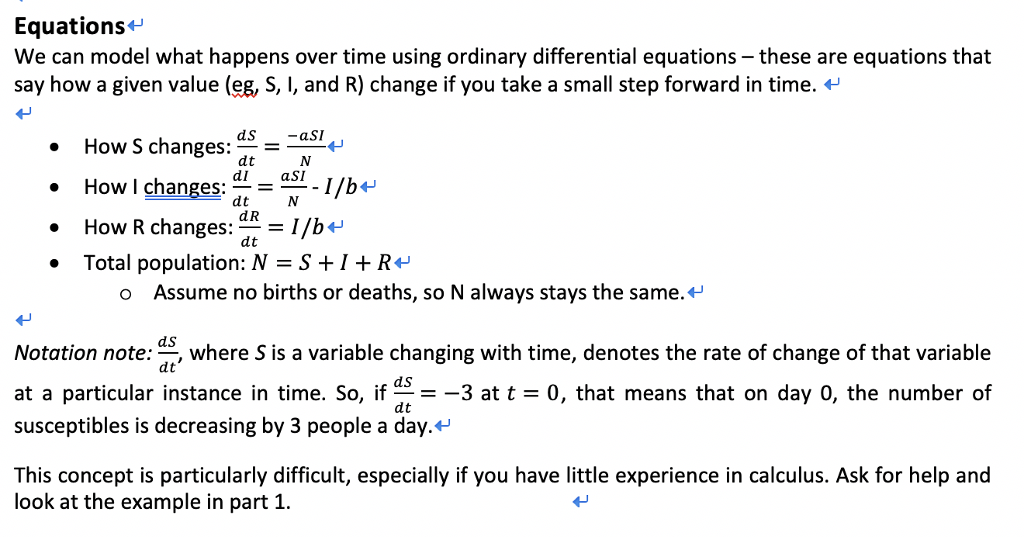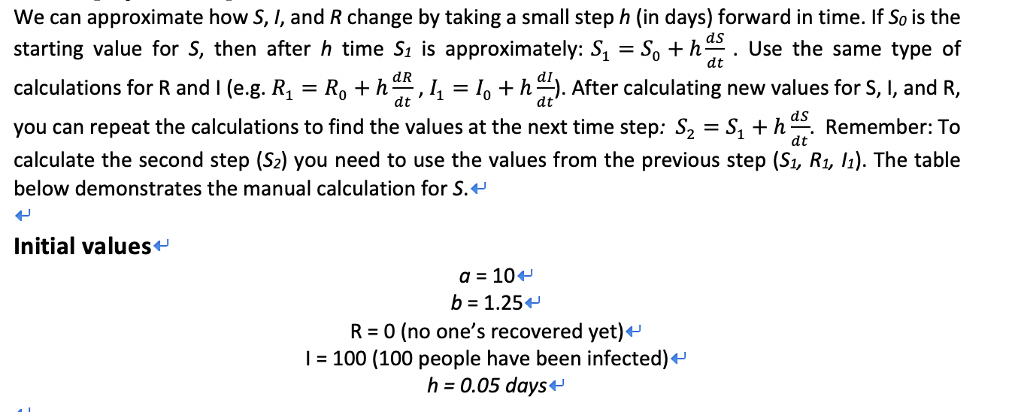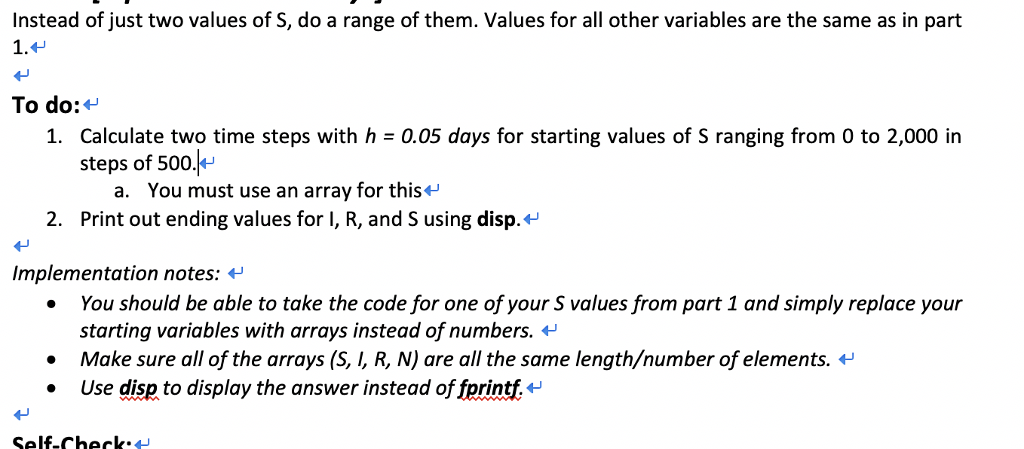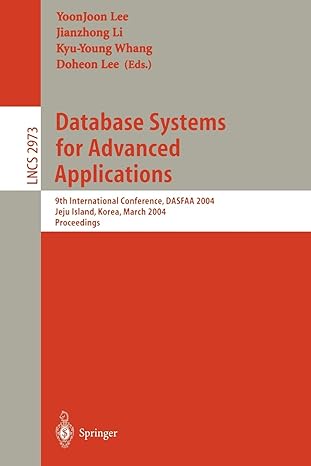


Equations We can model what happens over time using ordinary differential equations -these are equations that say how a given value (eg, S, l, and R) change if you take a small step forward in time. How Changes:-=-- How I changes: How R changes: ~ - Ilbu Total population: N = S + 1 + R4 dt dlaSI dt dR dt o Assume no births or deaths, so N always stays the same. dS Notation note: *, where S is a variable changing with time, denotes the rate of change of that variable at a particular instance in time. So, if -* - -3 att- 0, that means that on day 0, the number of susceptibles is decreasing by 3 people a day.* This concept is particularly difficult, especially if you have little experience in calculus. Ask for help and look at the example in part 1. dt dS dt We can approximate how S, I, and R change by taking a small step h (in days) forward in time. If So is the starting value for S, then after h time S1 is approximately: S1-So +he . Use the same type of calculations for R and i (e.g. R1 = Ro + hat, h = 10 + hdt). After calculating new values for S, I, and R, you can repeat the calculations to find the values at the next time step: S2 -S1 + h-. Remember: To calculate the second step (S2) you need to use the values from the previous step (S, Ri, li). The table below demonstrates the manual calculation for S. dS dt nitial values a = 104 b 1.25+ R 0 (no one's recovered yet) l 100 (100 people have been infected) h0.05 days Instead of just two values of S, do a range of them. Values for all other variables are the same as in part 1. To do:+ 1. Calculate two time steps with h 0.05 days for starting values of S ranging from 0 to 2,000 in steps of 500. a. You must use an array for this 2. Print out ending values for I, R, and S using disp. Implementation notes: + You should be able to take the code for one of your S values from part 1 and simply replace your starting variables with arrays instead of numbers. Make sure all of the arrays (S, I, R, N) are all the same lengthumber of elements. - Use disp to display the answer instead of fprintf. . Self-Check*









